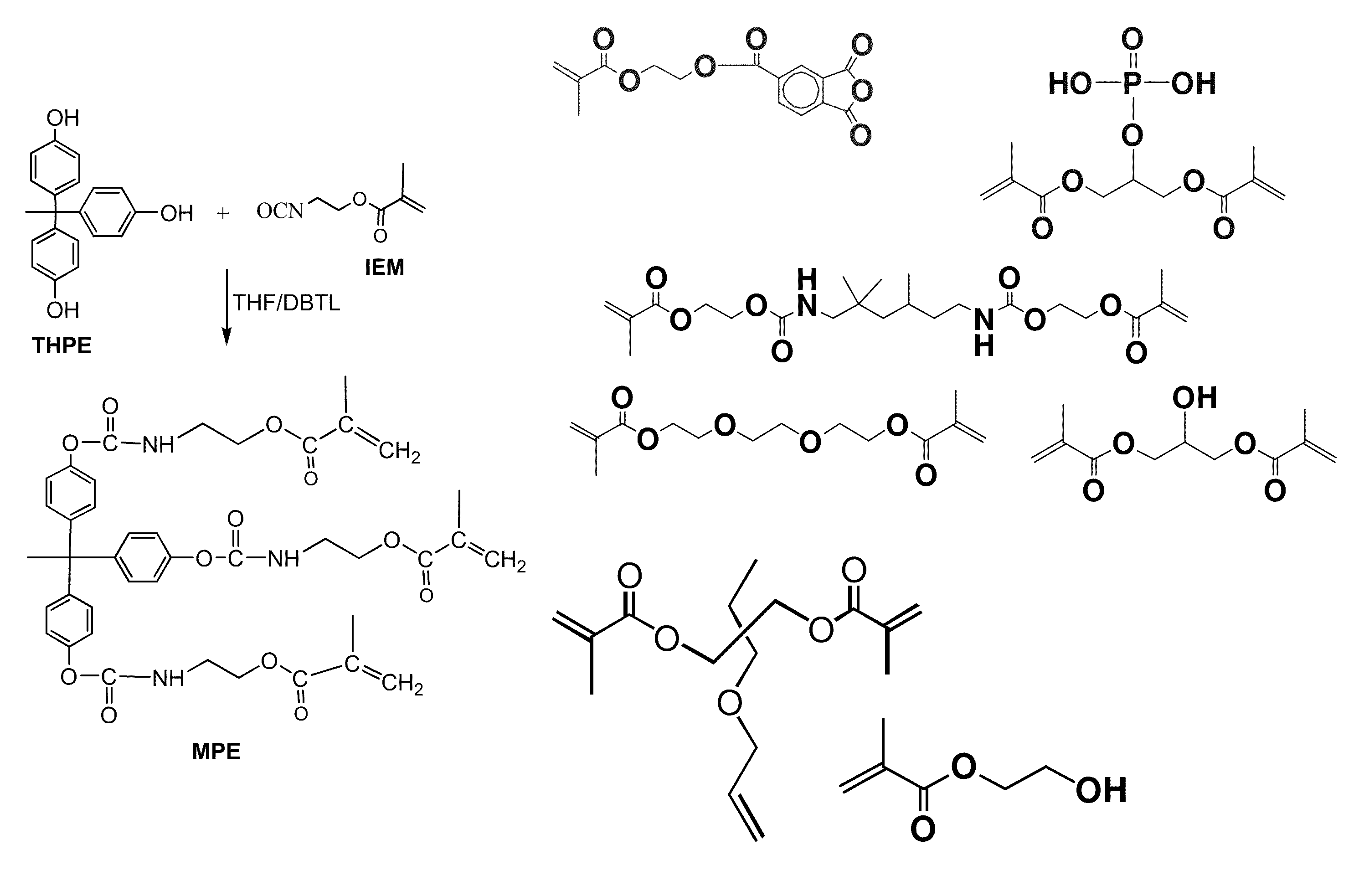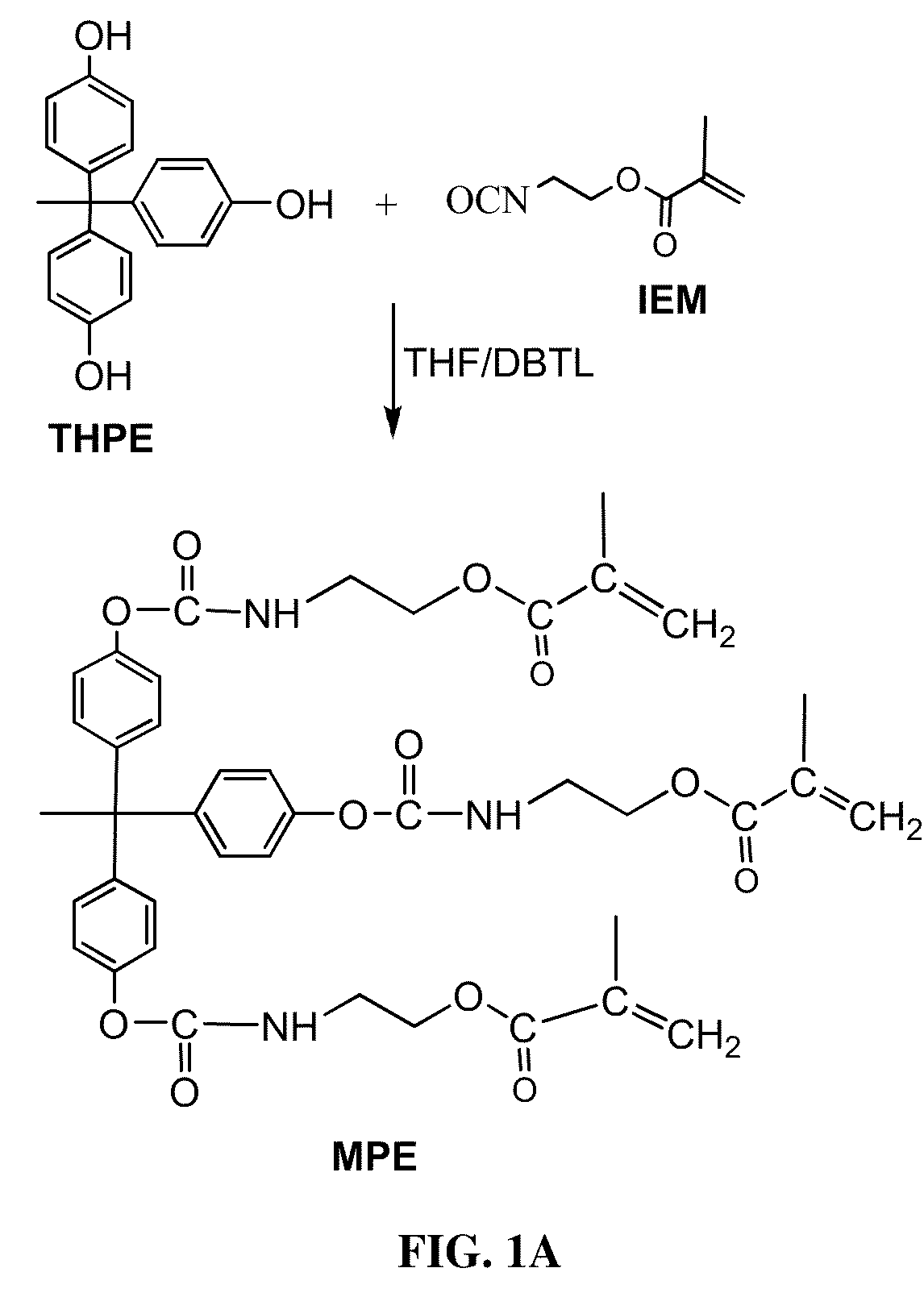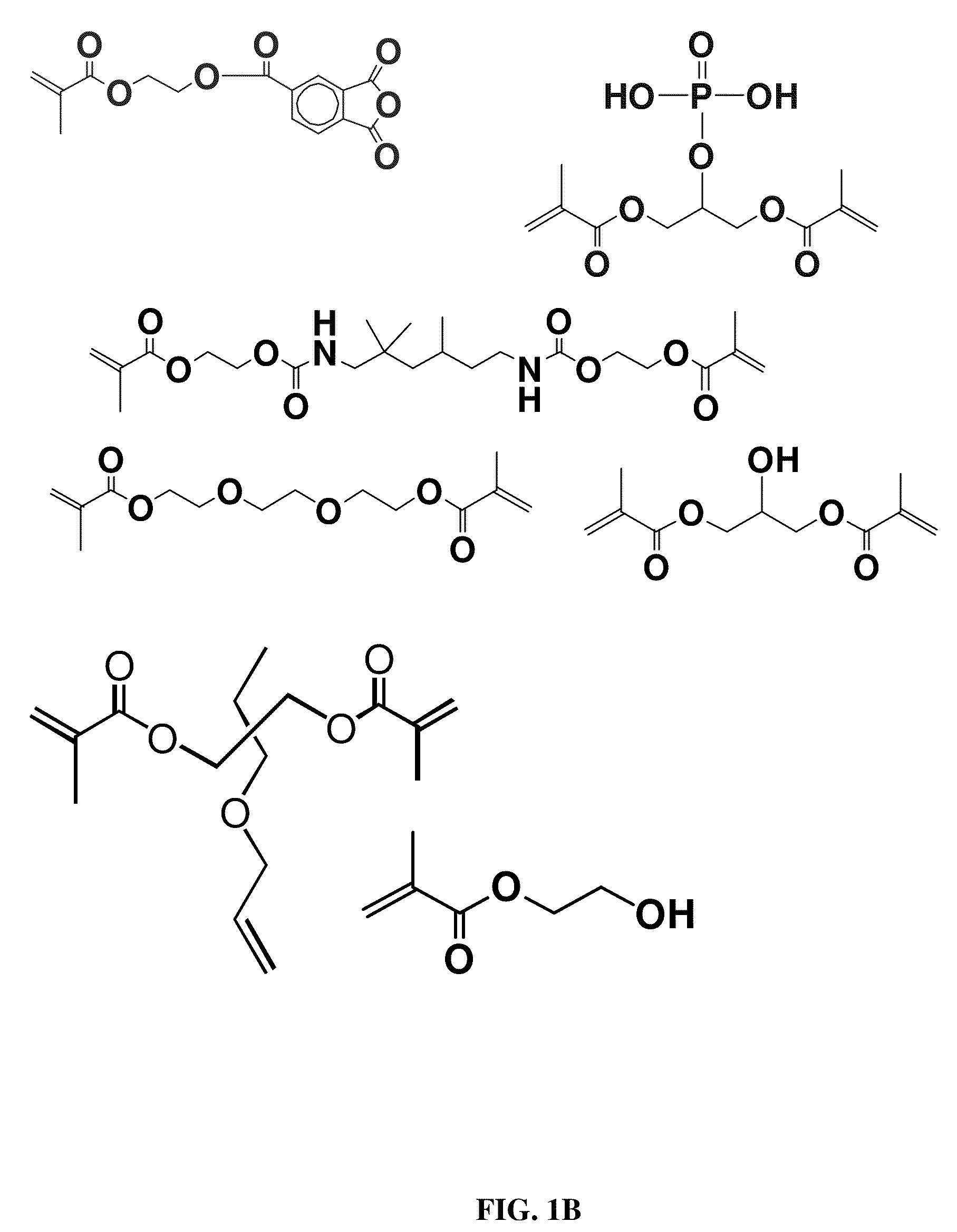Monomer for dental compositions
a technology of dental compositions and monomers, applied in the field of monomers for dental compositions, can solve the problems of affecting the clinical life of composite restorations, premature failure of composite restorations, and water in the mouth being a major interference factor
- Summary
- Abstract
- Description
- Claims
- Application Information
AI Technical Summary
Problems solved by technology
Method used
Image
Examples
Embodiment Construction
[0037]The primary factor in the premature failure of moderate to large composite restorations is recurrent caries at the margins of these restorations. Recurrent caries are most often localized gingivally and are linked to the lack of a consistent seal at the tooth / material interface. Clinicians frequently find very little enamel available for bonding at the gingival margin of class II composite restorations, and thus, the bond at this margin depends on the integrity of the seal formed with dentin. The breakdown of the bond at the dentin / adhesive / composite interfaces has been linked to the failure of current materials to develop a durable seal to dentin. Water is a major interfering factor when bonding adhesives and / or composites to the tooth. It has been shown detrimental adhesive phase separation at the interface with wet dentin and degradation of adhesive monomers or oligomers from class II composite after 3-months aqueous aging. Another factor, is the ester linkages in the metha...
PUM
| Property | Measurement | Unit |
|---|---|---|
| wt % | aaaaa | aaaaa |
| wavelength | aaaaa | aaaaa |
| temperatures | aaaaa | aaaaa |
Abstract
Description
Claims
Application Information
 Login to View More
Login to View More - R&D
- Intellectual Property
- Life Sciences
- Materials
- Tech Scout
- Unparalleled Data Quality
- Higher Quality Content
- 60% Fewer Hallucinations
Browse by: Latest US Patents, China's latest patents, Technical Efficacy Thesaurus, Application Domain, Technology Topic, Popular Technical Reports.
© 2025 PatSnap. All rights reserved.Legal|Privacy policy|Modern Slavery Act Transparency Statement|Sitemap|About US| Contact US: help@patsnap.com



